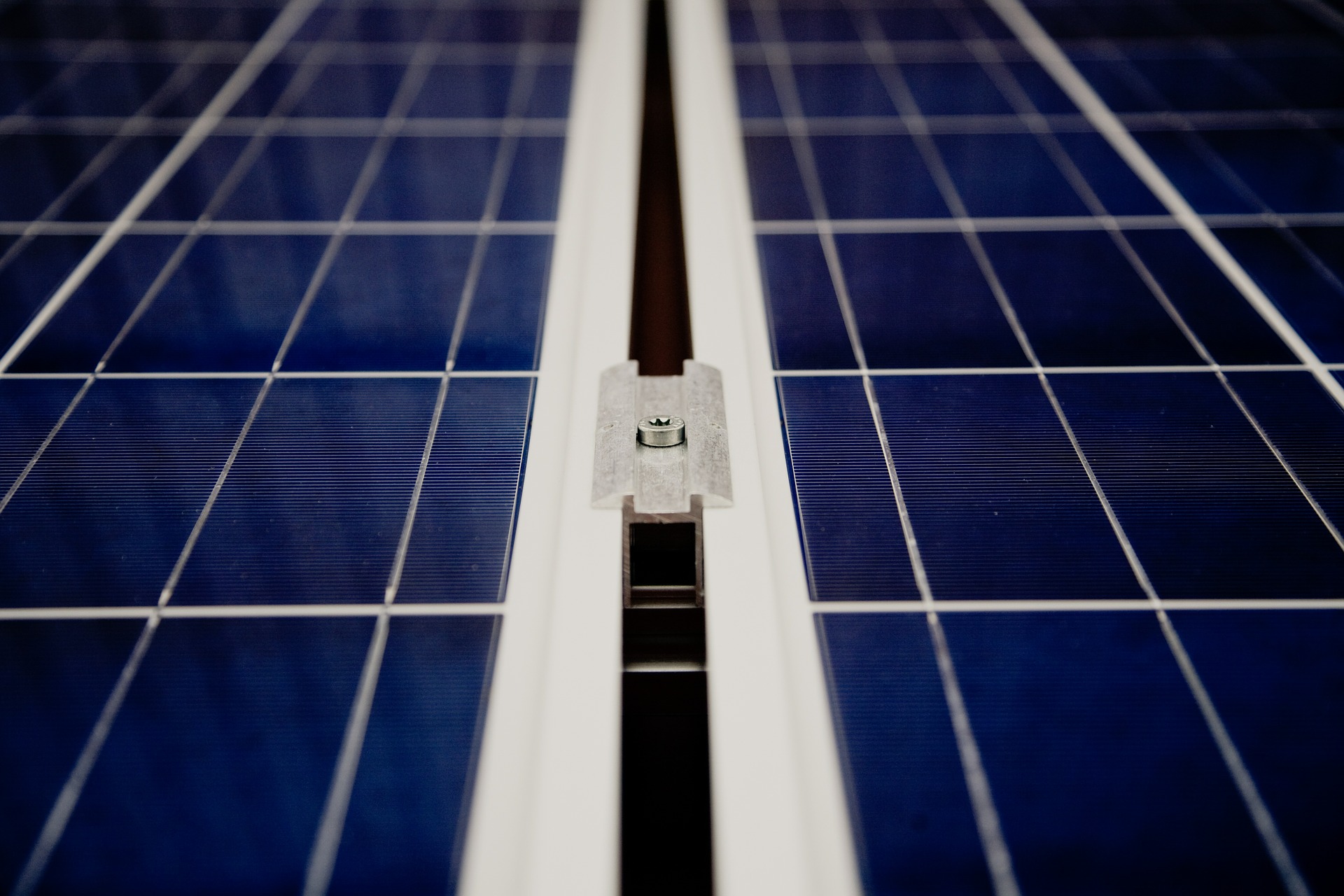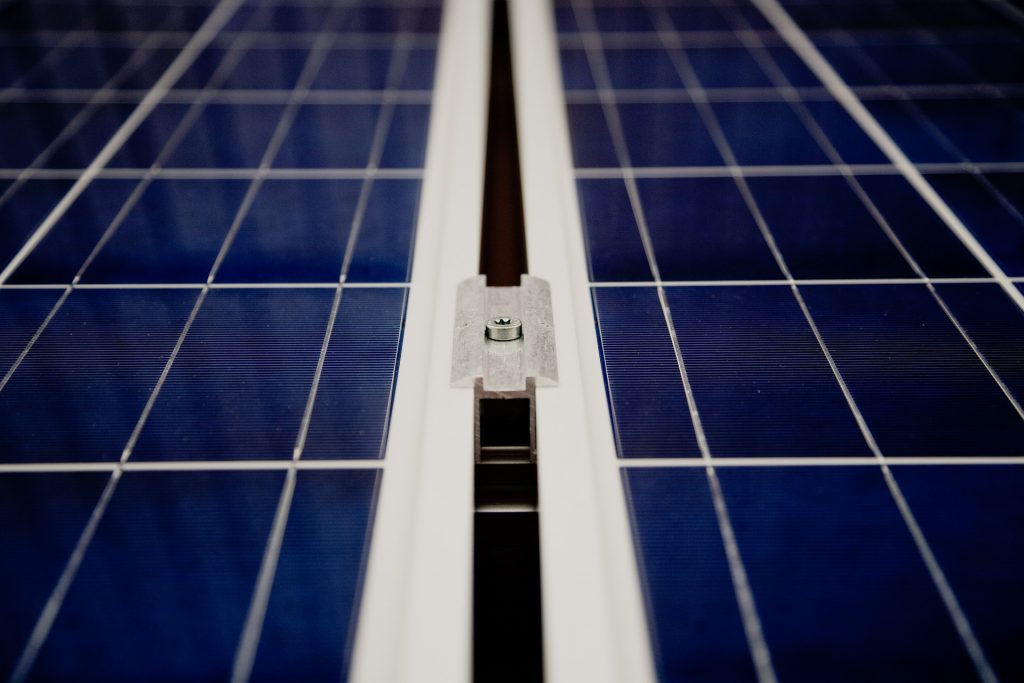Our Airstream now has full solar power!

Our Airstream is flat out electric, literally. Without even plugging in. Our little 200 square foot home on wheels now possesses the ability to generate its own power and live entirely off grid.

Over the Thanksgiving break, my wife and I drove Charlie nearly 3,000 miles up to Oregon and back from our home base in Tucson, AZ. It was our first major drive with our truck (Clifford) and our Airstream (Charlie). The plan? Upgrade our battery system and install solar panels on our Airstream so we can spend extended periods of time out in the middle of freaking nowhere.
Somehow, we pulled it off without a hitch.
Okay, that is not entirely true - we do have a hitch, after all. It's a Hensley, one of the safest hitches in the business, though not cheap. It kept the Airstream right in line behind us through 50 MPH sustained winds as we barreled south through California on our way back.
We blazed a trail through all kinds of rain and wind. In Oregon, it rained every single day except for the day that we arrived. It made me appreciate the fall weather here in beautiful sunny southern Arizona. But it also taught me something kinda cool: Even in cloudy weather, solar still works. Kinda.
Our new and improved solar-powered rig
After much discussion, we finally nailed down our system. We now have 500 watts of solar on top of our Airstream (five 100 watt solar panels). These panels feed our new AGM battery bank consisting of 440 Ah of juice (220 usable). We also had a 1000 watt pure sine inverter installed to electrify our outlets.
Wait, huh? Okay, unless you happen to have solar on your home, or are intimately familiar with RV living, those numbers might not mean anything to you. Understandable.
To make it easy, look at it this way: All RVs have traditional AC outlets (alternating current), similar to those that you would find in a traditional home. When your RV is plugged into power at your campsite, those outlets are "hot", meaning they will deliver power to whatever is plugged into them. RVs also have 12v power fed directly from the RV's batteries. This 12v power runs the ceiling lights and any monitoring systems available. Things you don't plug in.
Again: RVs have two different power systems: 12v (DC) and 120v (AC). 12v comes from the RV's batteries only. 120v comes from plugging the RV into a power source (like a campsite power pedestal).
Here's the problem: We plan to "boon dock" as much as we can, which means we won't have "shore power" - the ability to plug our Airstream into anything. Thus, our outlets won't work because there is nothing to provide the power. No 120v. We can't plug anything in, like computers, cell phones or...anything.
Until now...
How these components make stuff work
That is where our inverter comes into play. The inverter will "invert" 12v power from our battery bank into 120v and deliver it to the outlets. This means we CAN plug things into our outlets even while not hooked up to shore power. We could be out in the middle of nowhere and still charge our computers or cameras, as well as watch TV or stream Netflix (provided we have an Internet connection or TV reception).
Cool so far? To recap, we are now using our battery bank to power both our 12v stuff as well as every 120v outlet so we can plug stuff in. However, how do we keep our batteries charged up when we have no power source (like a campsite's power pedestal) to plug the RV into?
Solar, baby! Okay, a generator could do this too (which we plan to buy as well), but solar is the primary mechanism we've chosen to keep our batteries charged. Solar takes the heat and energy from the sun and magically transforms that energy into something usable. Like power.
Our new solar panels on top of our Airstream will constantly charge the batteries when they need it. This means that the solar will charge the batteries while we use power from those batteries. If we use less power than the solar is providing, the batteries will charge up. If we use more power, the batteries will slowly decrease their charge.
To be clear: The outlets inside our Airstream do not care where the power is coming from. Whether from a campsite's power pedestal, a generator or solar panels, the outlets only see power (or the lack thereof).
There are many more details involved (like amps, amp hours, watts, usable charge from batteries, etc), but I don't want this article to become so mind-numbingly technical that you stop reading.
You still there? Awesome, thanks for sticking with me. You rock.
The trip
After my wife got out of work the Thursday before Thanksgiving, we left Tucson and traveled a couple hours north and crashed at my in-law's place that night. Friday morning we left bright and early, hell-bent on making good time. We could not be late - this install was to take place the week of Thanksgiving, and we knew that any delays might leave us sitting in Oregon for days over the holiday weekend. We needed to be there by Monday morning.
The first driving day went very smoothly. We drove 535 miles (long day) and found a campsite in Bakersfield, CA. Nice enough place, equipped with showers and a hot tub, pool, laundry, etc. Saturday, we left and high-tailed it up to northern California and stayed at the Mount Shasta KOA. It was cold and rainy. Snow sprinkled throughout the campground. Coming from the 80s in Tucson, we weren't used to this! But it was still cool - literally!
The next day, we made it to the shop in Springfield, Oregon (Eugene area). We camped overnight in their parking lot and met with the installation manager the next day to discuss our options. We told them to "maximize the number of panels"!
To our utter shock, we could have fit 800 watts of solar on top of our Airstream! That's huge. Airstreams have a natural space inhibitor (the curves!), so we were pleasantly surprised at the amount of solar our Airstream could support.
We watched as they played little cardboard cutouts of solar panels on the Airstream's roof, carefully situating them on either side of the skylight, TV antenna and exhaust fans. We could have completely covered the top in solar if we wanted to, but we ultimately decided that 800 watts of solar was overkill. Super cool, but totally overkill.
Once we decided that 500 watts was the right amount, we watched as they backed the Airstream into their shop and started work. This was all Monday. We left Monday afternoon to see a friend up in Corvallis, OR - about an hour north of Springfield.
We were late getting out because the installation took longer than expected. We finally got back into our Airstream at about 10:30pm the night before Thanksgiving. The installers worked long and hard that evening, and we rewarded them with a box of chocolate chip cookies. Cause, why not?
We love our new setup. Testing it is fun - it's entertaining to plug things into wall outlets to see exactly how much power they take from our batteries. Our goal while we are still in our campsite is to figure out exactly how much we can do and still maintain enough charge in our batteries. We have the luxury of plugging into the campsite's power pedestal if we get too low.
Of course, we definitely won't have that luxury when we are out in the middle of nowhere. We will have a Honda 2000 generator, though, just in case of cloudy days.
Watch our adventure
We put together a couple of videos on our entire adventure for our YouTube channel. Check them out below.
Part 1: Getting up there and crashing in their parking lot
Part 2: Getting solar installed and making the trip back


